Sylvain Meignier
LIUM
Joint speech and overlap detection: a benchmark over multiple audio setup and speech domains
Jul 24, 2023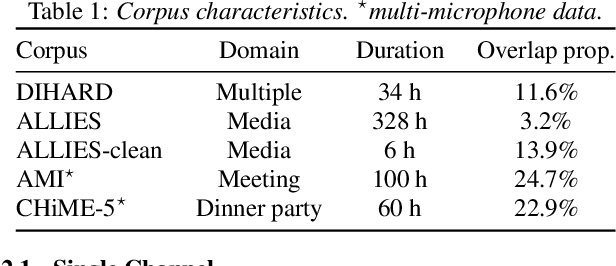
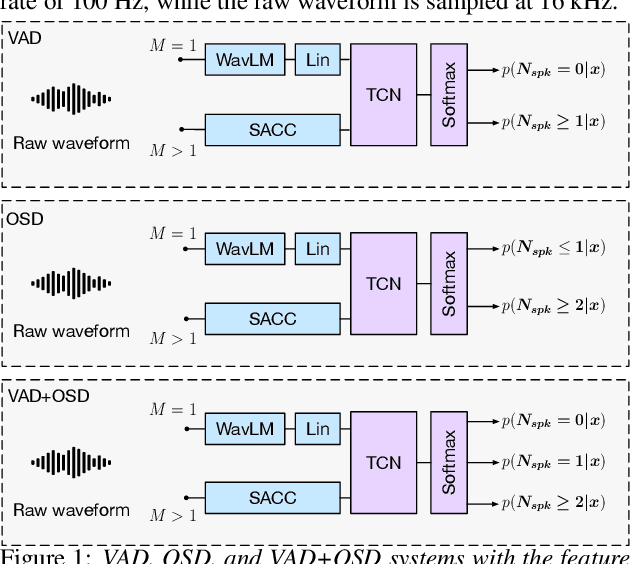

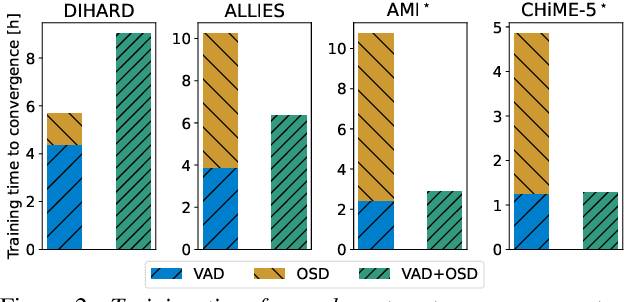
Abstract:Voice activity and overlapped speech detection (respectively VAD and OSD) are key pre-processing tasks for speaker diarization. The final segmentation performance highly relies on the robustness of these sub-tasks. Recent studies have shown VAD and OSD can be trained jointly using a multi-class classification model. However, these works are often restricted to a specific speech domain, lacking information about the generalization capacities of the systems. This paper proposes a complete and new benchmark of different VAD and OSD models, on multiple audio setups (single/multi-channel) and speech domains (e.g. media, meeting...). Our 2/3-class systems, which combine a Temporal Convolutional Network with speech representations adapted to the setup, outperform state-of-the-art results. We show that the joint training of these two tasks offers similar performances in terms of F1-score to two dedicated VAD and OSD systems while reducing the training cost. This unique architecture can also be used for single and multichannel speech processing.
Overlapped speech and gender detection with WavLM pre-trained features
Sep 09, 2022



Abstract:This article focuses on overlapped speech and gender detection in order to study interactions between women and men in French audiovisual media (Gender Equality Monitoring project). In this application context, we need to automatically segment the speech signal according to speakers gender, and to identify when at least two speakers speak at the same time. We propose to use WavLM model which has the advantage of being pre-trained on a huge amount of speech data, to build an overlapped speech detection (OSD) and a gender detection (GD) systems. In this study, we use two different corpora. The DIHARD III corpus which is well adapted for the OSD task but lack gender information. The ALLIES corpus fits with the project application context. Our best OSD system is a Temporal Convolutional Network (TCN) with WavLM pre-trained features as input, which reaches a new state-of-the-art F1-score performance on DIHARD. A neural GD is trained with WavLM inputs on a gender balanced subset of the French broadcast news ALLIES data, and obtains an accuracy of 97.9%. This work opens new perspectives for human science researchers regarding the differences of representation between women and men in French media.
End2End Acoustic to Semantic Transduction
Feb 01, 2021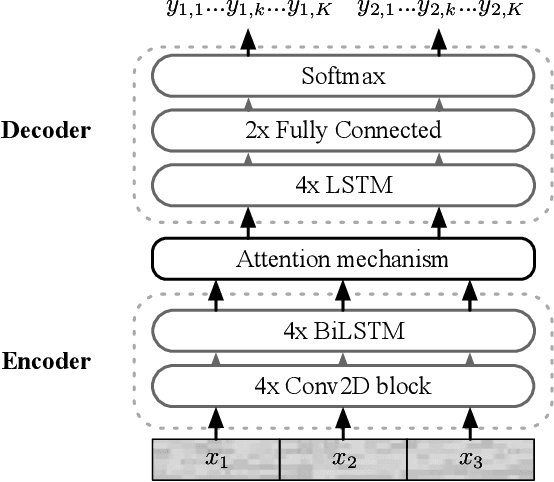
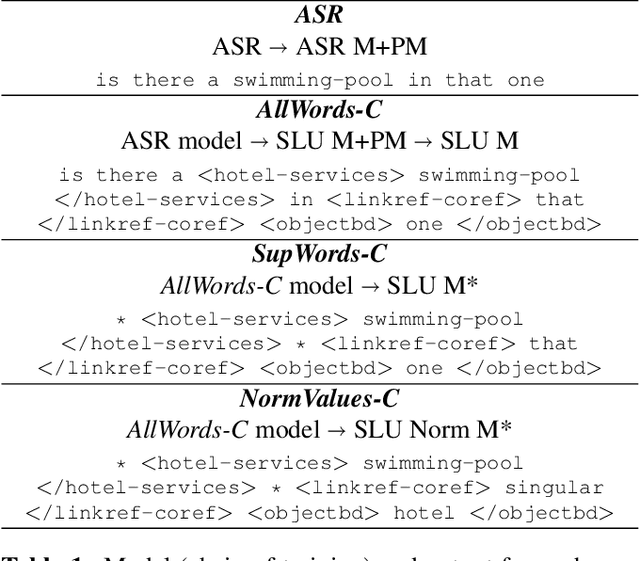
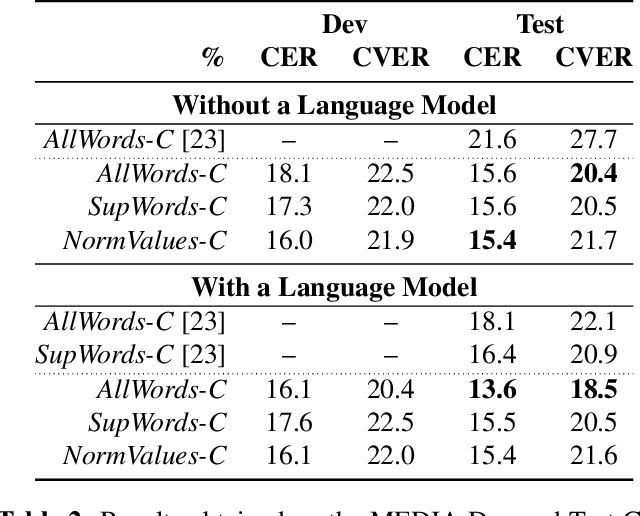
Abstract:In this paper, we propose a novel end-to-end sequence-to-sequence spoken language understanding model using an attention mechanism. It reliably selects contextual acoustic features in order to hypothesize semantic contents. An initial architecture capable of extracting all pronounced words and concepts from acoustic spans is designed and tested. With a shallow fusion language model, this system reaches a 13.6 concept error rate (CER) and an 18.5 concept value error rate (CVER) on the French MEDIA corpus, achieving an absolute 2.8 points reduction compared to the state-of-the-art. Then, an original model is proposed for hypothesizing concepts and their values. This transduction reaches a 15.4 CER and a 21.6 CVER without any new type of context.
Fantastic 4 system for NIST 2015 Language Recognition Evaluation
Feb 05, 2016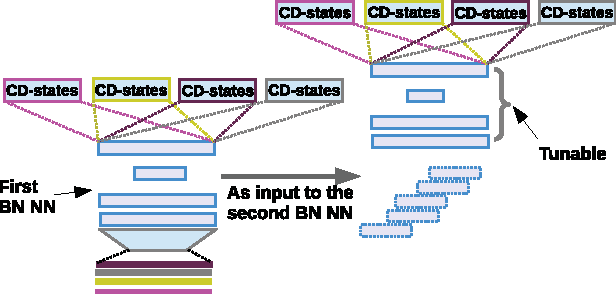
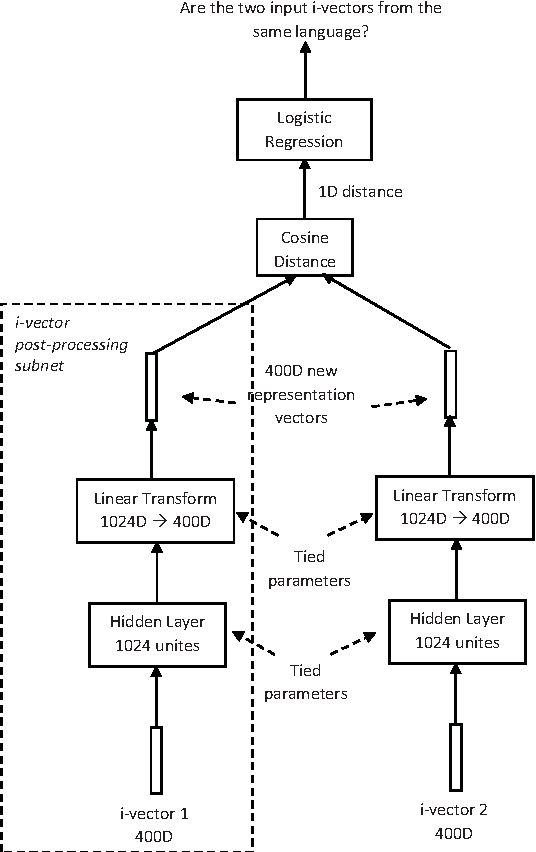
Abstract:This article describes the systems jointly submitted by Institute for Infocomm (I$^2$R), the Laboratoire d'Informatique de l'Universit\'e du Maine (LIUM), Nanyang Technology University (NTU) and the University of Eastern Finland (UEF) for 2015 NIST Language Recognition Evaluation (LRE). The submitted system is a fusion of nine sub-systems based on i-vectors extracted from different types of features. Given the i-vectors, several classifiers are adopted for the language detection task including support vector machines (SVM), multi-class logistic regression (MCLR), Probabilistic Linear Discriminant Analysis (PLDA) and Deep Neural Networks (DNN).
 Add to Chrome
Add to Chrome Add to Firefox
Add to Firefox Add to Edge
Add to Edge